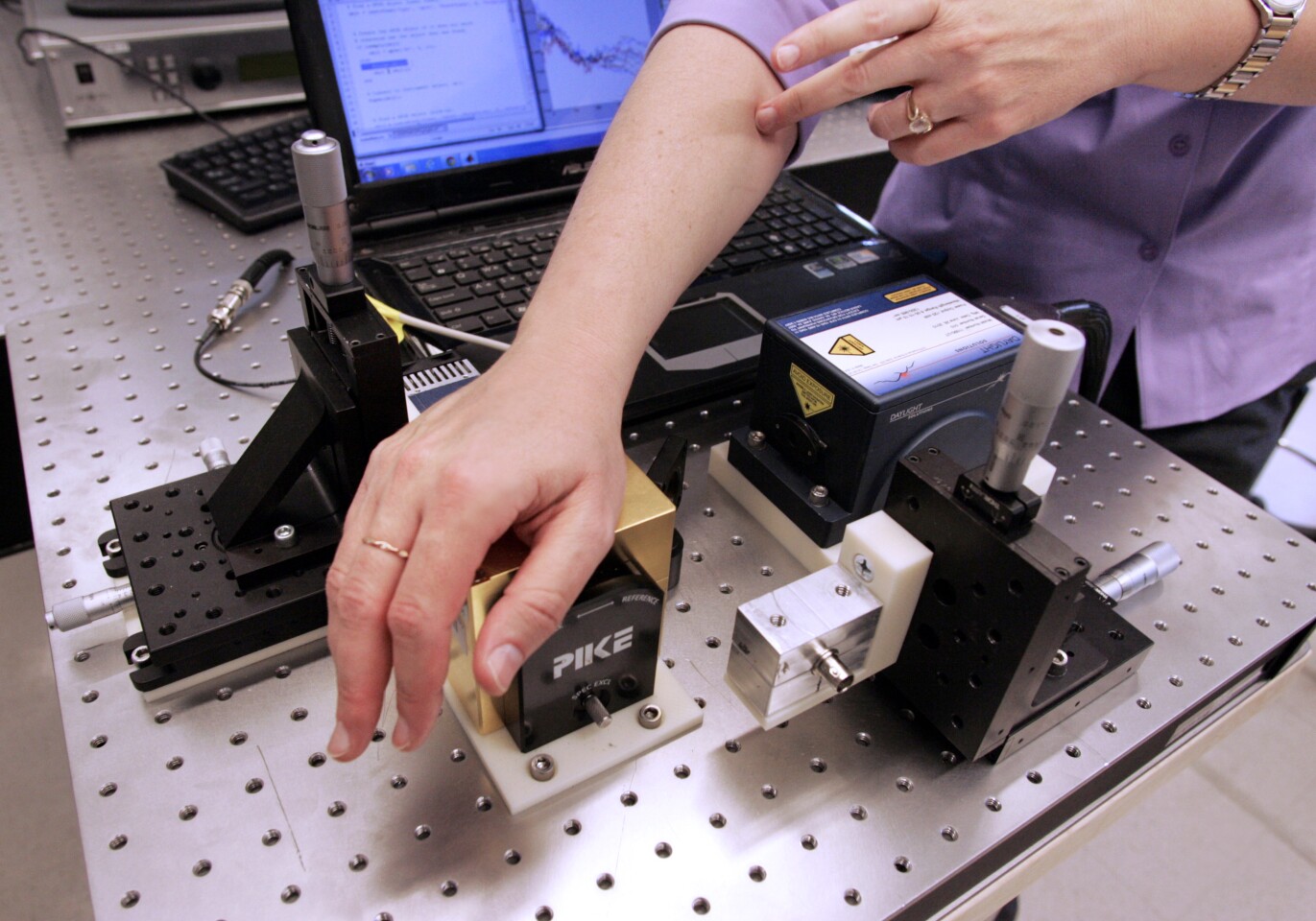Finger-prick tests to monitor blood glucose levels can be the bane of a diabetic's life. In a move that could put an end to such tests in the future, researchers at Princeton University have developed a non-invasive way to test blood glucose levels using a laser.
Like a number of other blood glucose measuring research efforts we've seen in recent years, such as carbon nanotube "tattoos" and biochips that measure glucose in saliva, the Princeton team's method doesn't require direct analysis of a blood sample.
Instead, the new approach detects the level of blood sugar by directing a specialized laser at a person's palm and measuring the amount of absorption by the sugar molecules in the person's body. Rather than the person's blood, the laser targets dermal interstitial fluid, which has a strong correlation with blood sugar.
Instead of near-infrared light, which is used by many medical devices, the Princeton team's method uses mid-infrared light. This is because although near infrared light is not blocked by water, making it suitable for use in the human body, it interacts with a number of acids and chemicals in the skin, making it unsuitable for detecting blood sugar.
However, the use of mid-infrared light presents its own problems – it is difficult to harness with standard lasers and requires relatively high power and stability to penetrate the skin and scatter off bodily fluid. The researchers found the answer in the form of a new type of device particularly capable of producing mid-infrared light called a quantum cascade laser.

Quantum cascade lasers boast the ability to produce one of a number of frequencies by passing electrons through a "cascade" of semiconductor layers. Recent developments have also provided increased power and stability, allowing the researchers to produce mid-infrared light with the properties required to penetrate the skin.
In testing the approach the researchers measured the blood sugar of three healthy subjects before and after eating 20 jellybeans and compared the results to measurements taken with a finger-prick test. These measurements were conducted repeatedly over a period of several weeks.
Although the laser measurement readings produced average errors larger than the standard blood sugar monitors, the researchers said they remained within the clinical requirement for accuracy. Glucose monitors need to produce a reading within 20 percent of the patient's actual level and the early version of the new system met that standard with an accuracy of 84 percent.
"It works now but we are still trying to improve it," said Sabbir Liakat, the lead author of a paper detailing the new approach.
The experimental setup the team started with took up a moderate-sized workbench and required an elaborate cooling system to work. However, they have since solved the cooling problem, allowing the laser to work at room temperature, and will now look to shrinking the device.
"This summer, we are working to get the system on a mobile platform to take it places such as clinics to get more measurements," Liakat said. "We are looking for a larger dataset of measurements to work with."
The team's research is published in the journal Biomedical Optics Express.
Source: Princeton University School of Engineering and Applied Science





